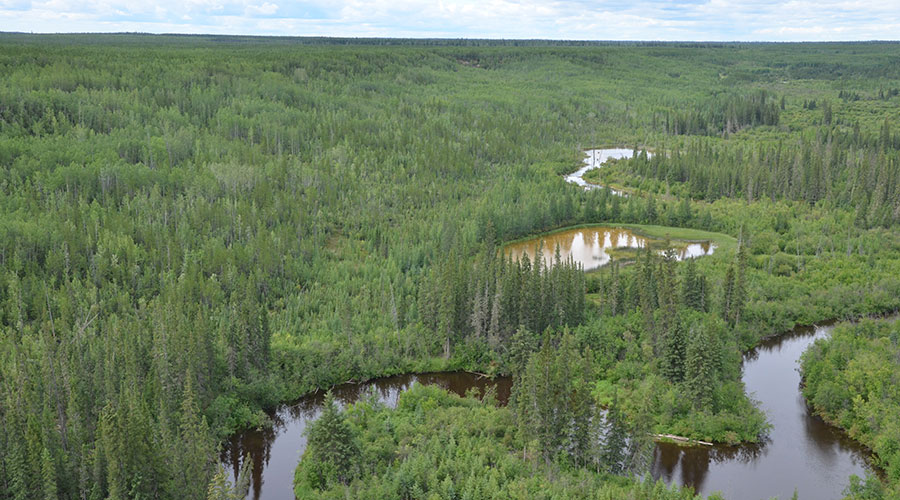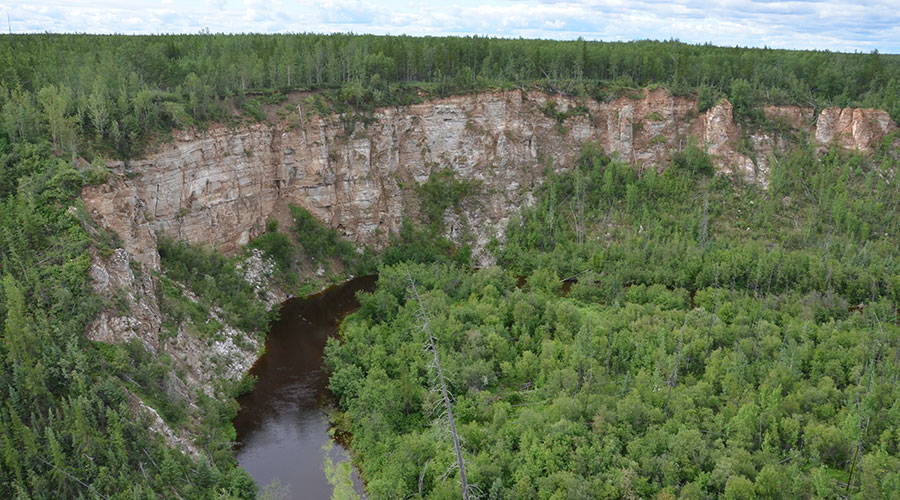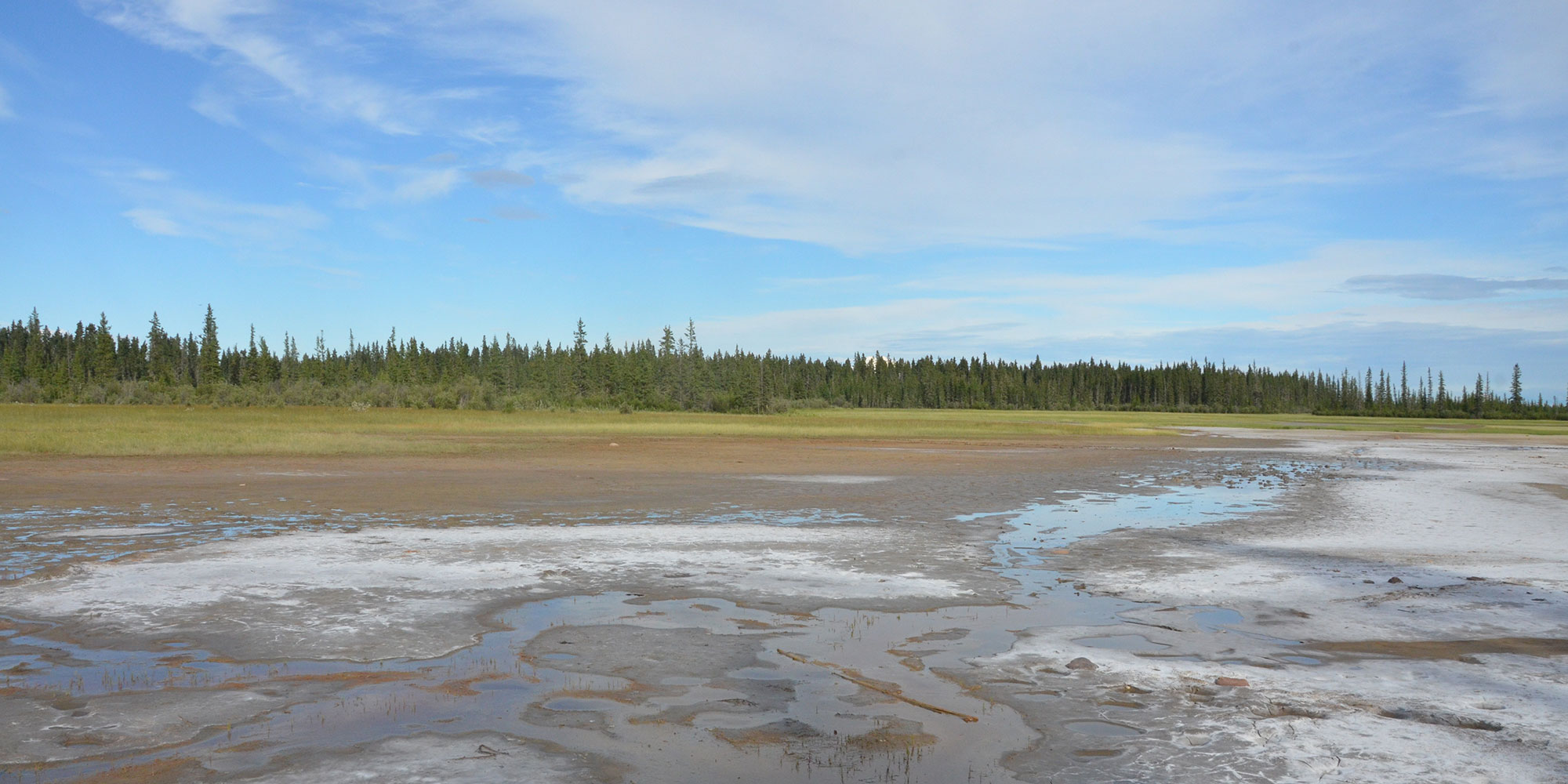Boreal is a vast, diverse and hugely important ecological space
When successive Alberta governments announced plans to create the world’s largest swath of protected boreal forest, it caught the attention of conservation groups, biologists, industry and ordinary Albertans alike. The boreal zone is a vast expanse of northern forest that stretches across Canada and northern climates throughout the world, with trees such as pine, spruce, fir, poplar and birch.
The 143,800-hectare protection zone builds on the 160,000 hectares set aside in 2019 when the Kitaskino Nuwenëné Wildland was created.
The area is almost three times the size of Waterton Lakes National Park and is located between the Birch River Wildland Provincial Park and existing Kitaskino Nuwenëné Wildland, south of Wood Buffalo National Park. Almost all of the proposed expansion overlaps with woodland caribou habitat.
Kitaskino and Nuwenëné mean “our land” in Cree and Dene, respectively.
We asked Dave Critchley (Biological Sciences Technology – Renewable Resources ’98, Forest Technology ’99), chair of Biological Sciences – Conservation Biology, about the benefits of protecting Alberta's boreal forest not only for the animals and people that live there, but for everyone on the planet.
1. This is a major win for wildlife
“Anytime there’s protection or elevated levels of protection, it’s a positive move. When you look at the implications of it – this will be the largest contiguous boreal forest on the planet – it’s another major feat for conservation,” says Critchley, who has spent about 20 years working in the boreal forest on bat conservation and fire management.
“A lot of the species that are up there require large tracts of land," he adds. Among those are caribou, wood buffalo, smaller animals like the endangered little brown bat, and 150 bird species (half of all species in Canada), such as trumpeter swans and sandhill cranes.
Protecting forests and removing them from the equation of industrial activity – be it oil, gas or forestry – means wildlife and plant species will be spared disruptions to their life cycle, he adds. “The conservation benefit is many fold in that regard.”
2. It protects a swath of boreal that’s so big it boggles the mind
 Globally, the boreal zone covers about 14% of the Earth’s land, or 1.9 billion hectares. Almost 60% of Alberta is covered in boreal forest, says the Alberta Wilderness Association. It’s hard to wrap your head around how vast this space is, partly because it’s impossible to see the forest for the trees.
Globally, the boreal zone covers about 14% of the Earth’s land, or 1.9 billion hectares. Almost 60% of Alberta is covered in boreal forest, says the Alberta Wilderness Association. It’s hard to wrap your head around how vast this space is, partly because it’s impossible to see the forest for the trees.
Almost 60% of Alberta is covered in boreal forest.
“I’ve probably been in less than 5% of Wood Buffalo [National Park], and I’ve been going up and down there for decades. People do not understand the breadth of that space at all,” Critchley says.
“You can fly in a helicopter for hours without seeing any signs of civilization. Just the sheer scope is impressive. If someone was to walk end to end along Vancouver Island without crossing a road, that would be a way to put [the protected area] in perspective, but it’s even larger than that.”
3. The boreal is place of mystery
“We’ve got spaces [in the boreal forest] that are of international importance for wildlife," says Critchley. "There are protection zones and unique habitats that are found nowhere else.”
Not unlike any great forest system, such as the rainforests of South America, we’re just scratching the surface in what we’ve learned about the boreal. Because of its size, scientists still don’t have a full picture of the area’s biodiversity.
“We’re still finding new species and a lot of it is because we don’t have people on the ground covering all that forested area consistently.”
4. Alberta closing in on UN protection targets
 Canada committed to protect 17% of land areas by 2020 as outlined in the United Nations’ Convention on Biological Diversity. A 10-year strategy aims to stop biodiversity loss over land and in the oceans.
Canada committed to protect 17% of land areas by 2020 as outlined in the United Nations’ Convention on Biological Diversity. A 10-year strategy aims to stop biodiversity loss over land and in the oceans.
By protecting the boreal, Alberta establishes itself as a leader in this part of the world. Alberta’s protection areas cover more than 14% of the province, up almost 2% because of the new and expanded parks. Canada has been criticized for lagging behind all other G7 nations in meeting its commitments, protecting less than 11% of land as of 2017.
By protecting the boreal, Alberta establishes itself as a leader in this part of the world.
“Alberta will likely be the first geographic and political area within North America that will reach its protection targets of 17%. We have a unique space here in Canada where we can actually have wild areas. You go into Europe and you have few wild areas where you can actually do this.”
And while Alberta deserves praise, more work needs to be done, Critchley adds.
“It’s a huge piece of land, but are we capturing an equal balance of all the different ecosystems in the province? That’s the question, and I would suggest we are not.”
5. A global win for climate change
In addition to its biodiversity, Alberta’s boreal forest is greatly important for its role in storing greenhouse gases. Peatlands and older trees and shrubs suck up and store huge amounts of carbon that otherwise would remain in the atmosphere – a concept called “carbon sink.”
“The idea behind it is reducing the amount of carbon that’s going in the atmosphere and causing the greenhouse impact – elevating temperatures, changing climatic patterns, shifting localized meteorological events. It changes all the dynamics we experience.”
Forest fires and industrial activity removes these carbon-hungry plants and releases the gas into the atmosphere, so protecting what we can is important, Critchley says.
